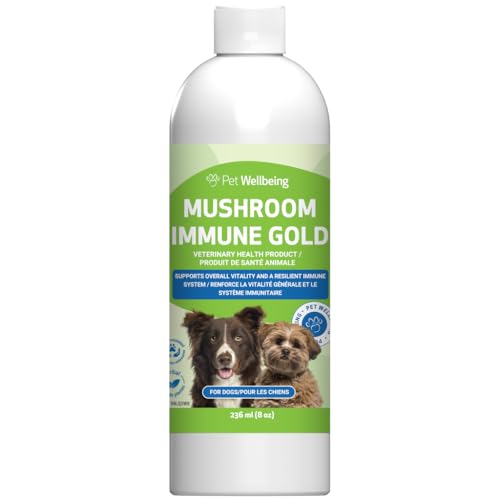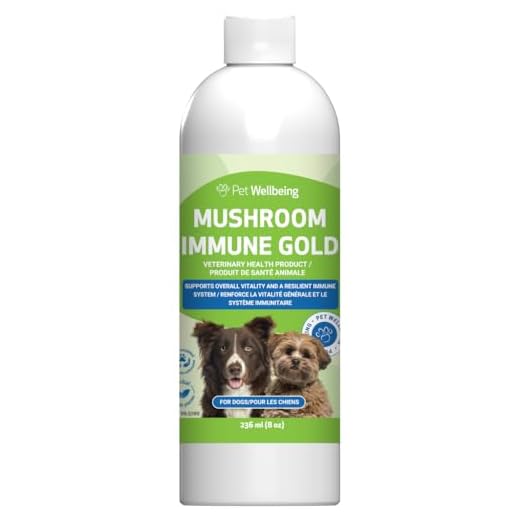


Regularly examining your canine’s skin is crucial for early detection of health issues. Pay close attention to any unusual growths or changes in pigmentation, especially on areas exposed to sunlight. Look for dark, irregular spots or lumps that might vary in colour, shape, and size. These characteristics could indicate the presence of malignant cells.
Watch for signs of discomfort around the affected area, such as scratching, licking, or swelling. These behaviours may suggest your pet is experiencing irritation or pain. If you notice any of these symptoms, it’s advisable to consult a veterinarian promptly.
Keep a record of any skin changes. Taking photographs can help track the development of any suspicious spots over time. This information will be invaluable for your vet during examinations. Early intervention often leads to better outcomes, so staying vigilant can make a significant difference in your furry friend’s health.
Identifying early signs of melanoma in dogs
Spotting early indicators of skin cancer in our furry companions can make a significant difference in their health. Focus on these specific characteristics to catch potential issues early.
| Sign | Description |
|---|---|
| Unusual Growths | Look for any new lumps or bumps that appear suddenly. These can vary in size and may change over time. |
| Colour Changes | Watch for changes in pigment on the skin. Dark spots or patches that develop on previously normal areas should be examined. |
| Texture Changes | Any areas that become rough, scabby, or ulcerated could indicate a problem. Smooth skin turning irregular can be concerning. |
| Increased Sensitivity | If your pet shows signs of discomfort when touching certain areas, this may signal underlying issues. |
| Swelling | Localized swelling around a growth or lesion may indicate inflammation or infection, which requires further investigation. |
Keep an eye out for changes in behaviour as well. If your pet seems less active or avoids certain activities, it’s worth a visit to the vet. Regular check-ups are key; they can help catch concerns before they escalate. I always make it a point to examine my dog regularly, especially after walks or playtime, to ensure everything looks normal.
Common locations for melanoma on canines
Pay attention to specific areas where growths frequently appear. Oral regions, particularly the gums and palate, are prime spots. These lesions can be subtle and often go unnoticed until they become more pronounced. Regularly examining your pet’s mouth is crucial.
Another common site is the skin, especially in unpigmented areas. These can manifest as nodules or lumps, which may be mistaken for benign growths. Areas around the eyes, ears, and between the toes are particularly vulnerable. Regular grooming and inspections can help catch any abnormalities early.
Less typical locations
Occasionally, growths can develop on less obvious areas such as the nail beds or in the groin region. These spots may be overlooked during routine checks, so it’s wise to keep an eye on your furry friend’s entire body. If you notice any changes in these areas, consult your veterinarian without delay.
Monitoring your pet
Establish a routine to monitor for unusual changes or growths. Regular vet visits are essential for early detection. Keeping a close watch on your companion’s behaviour can also provide clues; any signs of discomfort or changes in eating habits should prompt further investigation.
Visual characteristics of malignant melanoma
Focus on irregular patches with varied pigmentation; these frequently present as dark brown, black, or even grey areas. The shape often appears asymmetrical, with uneven borders that may blend into the surrounding skin. Pay attention to any rapid changes in size, especially if a small spot suddenly enlarges or new spots emerge. A diameter greater than 1 cm is a warning sign, particularly if combined with other factors.
Texture can vary significantly; some growths may feel rough or raised, while others remain flat and smooth. Ulceration or crusting on the surface of a lesion indicates a more advanced stage. Watch for any signs of bleeding or discharge, as these symptoms can signal a worsening condition. The presence of multiple nodules or masses is also a key indicator.
Locations on the body play a role in visual characteristics. Areas with less fur, such as the mouth, eyelids, or pads, may display lesions more prominently. Inspect these regions closely, as they can be more difficult to notice in thicker-coated areas. Regular examinations are crucial, as early detection can significantly impact treatment options.
Differences between melanoma and other skin tumours
Understanding the distinctions between different skin growths is vital for effective care. Here are key differences to recognise:
- Colour: Tumours can vary in pigmentation. While some appear dark and mottled, others may be pink, white, or flesh-toned. This variation can help differentiate between types.
- Shape and Borders: Malignant growths often have irregular edges, whereas benign lumps typically display smooth, well-defined borders.
- Size: Malignant forms tend to grow rapidly, while other types may remain stable. Keep an eye on any sudden changes in size.
- Texture: Some tumours have a rough surface, while others are smooth. The texture can indicate the nature of the growth.
- Location: Certain types of skin conditions prefer specific areas. For instance, benign lumps might show up on the body, while more aggressive types often appear on the face or paws.
Regular examinations are key. Monitor any changes in these characteristics and consult a veterinarian if you notice anything unusual. Early detection can make a significant difference in treatment outcomes.
How to Perform a Skin Examination on Your Canine Companion
Begin the examination in a well-lit area. Ensure your pet is calm; a gentle pat or treat can help. Use your hands to feel for any unusual bumps or lumps across their body. Start from the head and work your way down to the tail, checking the ears, around the eyes, and between the toes.
Pay close attention to the skin’s texture. Look for any changes in colour, such as red patches or dark spots. Grab a magnifying glass if needed to spot smaller irregularities. Don’t forget to examine the belly and under the legs, as these areas are often overlooked.
Check for any signs of irritation, such as scratching or licking. These behaviours can indicate discomfort. If your pet has long fur, part the hair to inspect the skin underneath thoroughly. This can reveal hidden issues that are not immediately visible.
Take note of any unusual growths. Measure and document their size and shape. If you find anything concerning, schedule a visit to your veterinarian for further evaluation. Keeping a record of your findings can help track any changes over time.
Regular examinations can lead to early detection of health issues. Make this a routine part of your pet care, ideally once a month. Establishing this habit not only promotes your pet’s health but also strengthens the bond between you and your furry friend.
When to Consult a Veterinarian About Skin Tumours
If you notice any unusual changes in your pet’s skin, especially if they have developed new growths or existing spots have changed in appearance, it’s time to seek veterinary advice. Early intervention can make a significant difference in outcomes.
Signs Indicating a Vet Visit
- New lumps or bumps that appear suddenly.
- Changes in the colour, size, or texture of existing lesions.
- Persistent itching, redness, or inflammation in specific areas.
- Bleeding or discharge from any skin growths.
- Unusual behaviour, such as excessive licking or chewing at a particular spot.
Additional Considerations
It’s beneficial to monitor your furry friend’s skin regularly. If you’re unsure about the changes, make a note of any observations and discuss them with the vet. Keeping a record of your pet’s diet is also helpful; for instance, if your pet has skin irritations, exploring options like best fry dog food for itchy dog can be part of a comprehensive approach to skin health.
Remember, timely veterinary consultation can lead to prompt diagnosis and treatment, significantly improving your companion’s quality of life.
Understanding treatment options for canine melanoma
Consulting a veterinary oncologist is the first step in managing this serious condition. They can provide tailored treatment plans based on the individual case. Surgery is often the primary approach, especially for tumours located on the skin. The goal is to remove the affected tissue completely, ensuring clean margins to reduce the chance of recurrence.
For larger or more aggressive growths, a combination of therapies may be recommended. Chemotherapy can be beneficial, particularly for cases that have metastasised. Drugs such as carboplatin or doxorubicin can be part of the regimen, but potential side effects should be discussed with your vet.
Immunotherapy is another option, aimed at boosting the dog’s immune system to fight the cancer more effectively. A vaccine called ONCEPT, designed specifically for this type of cancer, is available and has shown promise in extending survival times in affected canines.
Radiation therapy can assist in shrinking tumours or alleviating pain in advanced cases. This treatment is often used when surgery isn’t feasible due to tumour location or the dog’s overall health. Palliative care should also be considered to maintain the quality of life, focusing on comfort and management of symptoms.
Regular follow-up appointments are crucial to monitor the dog’s response to treatment and make adjustments as necessary. Keep an open dialogue with your vet about any changes in behaviour, appetite, or physical condition. Early intervention can significantly influence outcomes, so stay vigilant and proactive in care.







